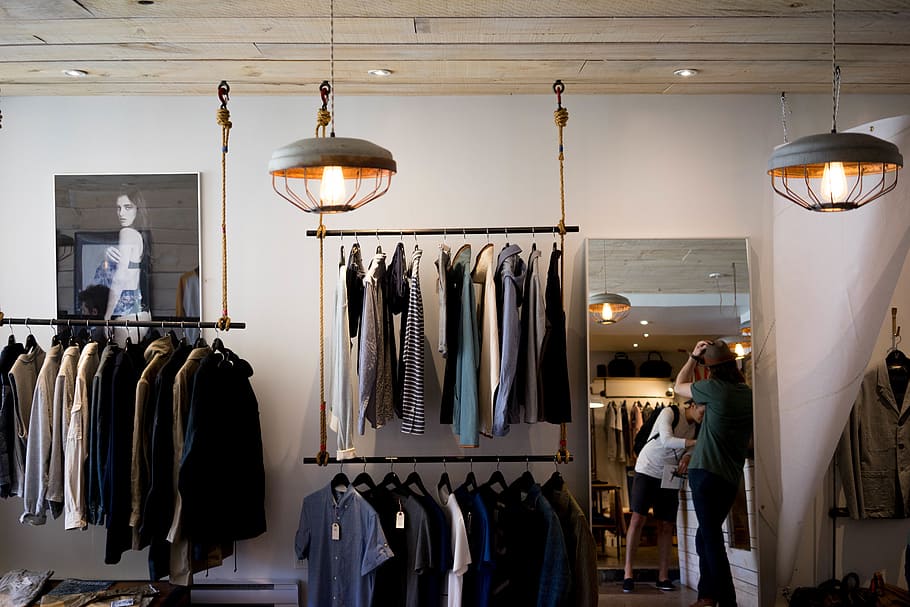Retailers are seeking new ways to compete with online retailers. One way is by creating a unique experience for their customers, which can be done through the use of interactive technology.
The example of a business plan for a boutique pdf is an example of a business plan for a retail clothing boutique.
When it comes to your own style, you’ve always had a unique flare. You have a good eye for the finest items and know how to adapt your taste to various individuals. If you were to start your own retail apparel shop, you know you could put together a distinctive product range and attract consumers. It’s now time to create a business strategy to formally launch your style.
Is a business strategy for your retail clothes store truly necessary? Yes, to put it simply. A business plan will not only be necessary for obtaining loans and investments, but it will also help your boutique stand out from the crowd. Consider it a method to respond to the inquiry, “Why does the world need your little business?”
Writing a business plan for a retail clothes boutique, or any company for that matter, is important due to the fierce competition.
Many of the basic components of a typical business plan will be included in a clothes retail boutique business plan. However, there are a few more details you’ll need to consider, such as your product line and store location. This article will show you how to customize your plan to incorporate these and other features while still include all of the essential components of a conventional business plan.
Our sample business plan for clothes retail may be useful if you need an example of a business plan for a general clothing shop. As you read the remainder of this essay, it may serve as a starting point for creating your own strategy.
Why do you need a retail clothes boutique business plan?
If you’re starting a retail apparel store, you already know how essential it is to stand out from the competition. A retail boutique will face competition from other boutiques as well as other kinds of apparel merchants, such as chain shops, department stores, and outlet stores, to mention a few. It will also compete with Etsy stores, Amazon, and Craigslist on the internet. In terms of location and inventory, these alternative clothes shops will typically have greater flexibility than a boutique. As a result, it will be critical for you to discover and capitalize on any competitive edge that distinguishes you.
A retail apparel boutique varies from other stores in that it sells specific items. You’ll probably have a more discerning product line than other merchants, but the products in that line will be distinctive or hard to obtain elsewhere. You’ll almost certainly choose designs and products that appeal to a certain kind of consumer, often known as your target market. Later in this post, we’ll go into the details of how to define your target market.
Naturally, you’ll want to address the worries of investors in your business plan. You’ll need to create a plan to assist you figure out your starting expenses and the inventory buying method you’ll employ. Demonstrate to them that you’ve considered who you want to shop at your business and how you’ll get them in the door.
What should your clothes retail boutique business plan include?

You’ll follow the fundamental structure of a business plan for the most part. However, you will need to add certain details that other kinds of companies may overlook. The following is a list of important things to include in your business plan:
A brief overview
An executive summary is required in every business strategy. This part should be written last so that you can solidify the specifics of your strategy ahead of time. The executive summary should highlight the most important aspects of your strategy while being concise. At most, keep it to 1-2 pages.
This is the section of the strategy that you will present to prospective investors initially. If they’re interested, you may discuss the remainder of your strategy with them later.
Your executive summary should include an overview of your store’s goal, a brief analysis of your target market, and a list of your management team’s and financials’ key characteristics. If you performed a market study, you may convey the essence of it, but keep it at a level suitable for a casual reader.
Possibility: Concept and vision
The “problem and solution” are outlined in this part of the business plan. Because apparel retail is such a competitive industry, your strategy will almost certainly address the issue of intense competition. Then you’ll have to come up with a way for your boutique to differentiate itself from the competition.
What will your boutique’s distinct selling point be? Will you just use local vendors or will you stock clothes from particular designers? Perhaps personal stylists or wardrobe bundles are included as part of the experience? Establish how your boutique will distinguish itself and offer a solution to consumers who are weary of crowded and all-too-similar apparel choices, whatever the situation may be.
This attitude will apply to your current place as well. Boutiques, unlike bigger or more general shops, are more likely to be found inside larger buildings such as plazas or shopping malls. Explain how you’ll choose a location, how you’ll utilize the space, and how you’ll set yourself out from the competitors.
Line of Products

Make sure to explain the style of your goods as well as the requirements they will meet for your target market. You’ll want to provide a comprehensive inventory of everything you intend to stock since a boutique usually sells higher-end or more specialized items.
This part should also include a list of your anticipated suppliers and the expenses of acquiring your product line. When it comes to buying goods, you’ll want to think about a purchasing strategy. Will you search for a manufacturer in the United States or abroad? What method will you use to assess the quality of their materials?
It’s worth noting that boutiques have a restricted selection of items. General goods stores usually carry a broad range of items. A boutique, on the other hand, sells specialized items, so you’ll probably need to carry less inventory and won’t have to pay as much for inventory management up front.
Specialty goods should cater to a certain market segment. Perhaps you’ll focus on hats and jewelry, repurposed clothes, or something completely different. Depending on your concept for your boutique, there are many options.
Market You’re After
One of the most important sections of your business plan is the target market section. Your ideal consumers make up your target market. It is not your goal to appeal to everyone. A clothes shop, on the other hand, caters to a certain market.
Perhaps you’ll discover your place among antique clothes collectors. Perhaps you’re selling cheap clothing to students at a local institution. Know who your target market is, what they’re looking for, and where they’re most likely to stumble across your business.
Your target market will almost always inform the specialization mentioned in your solution from the previous section. You may be passionate about a certain product line or technique, but if you can’t identify a prospective client base, it’s unlikely that you’ll be able to sell it. If you have the opportunity, speak with prospective consumers personally, conduct surveys, or even perform small sales runs to see if your company is feasible. Including any supporting data here not only guarantees that your concept is solid, but it also makes your company more appealing to investors.
Your business plan’s target market section may be very detailed. It may be worthwhile for you to read our post on all the details that might help you improve this area.
Branding and Design
The importance of brand identification in a boutique cannot be overstated. Your business name, location, space layout, and the types of goods in your inventory will all contribute to the development of your brand. Your boutique’s design and branding will help you attract your desired customer base and set you out from the competition.
Location
As previously said, location is crucial in ensuring that your business is accessible to your target market. You’ll also want to choose an area where the rent and utilities expenses are reasonable. That’s something to think about while figuring up your starting expenses.
Clothing boutiques are often found in bigger buildings such as malls and outdoor plazas. Consider which location will make it the most convenient for your target market to locate your store.
Also, think about the kinds of shops in your immediate vicinity. You’ll want to put your boutique next to other companies that cater to your target demographic but aren’t in direct competition with you.
Should it be near high-end restaurants and other businesses to provide a luxurious experience? Should it be in a downtown location for a more accessible, bohemian feel? Do you want your window displays to be bright and busy, or minimalist and focused? Keep your target market in mind while answering these questions.
Public relations and marketing
You’ll want to let everyone know about your new clothes retail store. The public relations and marketing part of your business plan lays out how you’ll let your target market know that your company is open for business. You might think about setting up a separate website and social media profiles. You might start an email list or buy advertising space in a local newspaper or on a billboard.
In addition to marketing, you need develop a public relations plan (PR). This is the amount of publicity your shop will get. Consider how you’d want to be rated in local newspapers and on websites like Yelp. The more you plan ahead and develop a communications strategy, the more likely you are to be able to steer the discussion and avoid unfavorable responses.
Plan your finances
A finance strategy is also required for your company plan. When it comes to pitching potential investors, the financial strategy is crucial. They’ll want to examine cash flow figures and forecasts. This section of your company plan demonstrates to them that you have a money-making strategy in place.
A sales projection, income statement, cash flow statement, and balance sheet are the four components of the financial plan. If handling finances seems intimidating, investing in a program like LivePlan may help you quickly and simply generate realistic financial forecasts that you can review and adjust as your company expands.
We’ve put up this guide to what should be in your financial plan for further information on financial statements.
Templates and samples of clothing store business plans
It’s a good idea to look at how other apparel shops and companies in related sectors have structured their business strategies. Take a look at our collection of free sample plans and templates. To get a head start on your business strategy, you may download any of these papers in Word format.
Additionally, if you need more information on how to create particular sections of a conventional business plan, see our comprehensive guide on how to construct a business plan.
A tool for creating a business plan for a clothes retail shop
If you’d like to work with a plan that adapts to your needs, you may want to look at LivePlan for developing your business plan. It will take you through the process of creating your business plan step by step. It also includes all of the financial projections you’ll need, making it an excellent tool for entrepreneurs of all levels of expertise.
Starting a company may be intimidating, so use the resources and publications accessible to you. Learn more about how LivePlan can help you write your retail clothes boutique business plan.
A business plan is a document that outlines the goals and objectives of a new company. It also includes detailed information about how the company will be run, as well as projections for future sales and revenue.
Frequently Asked Questions
How do I write a business plan for clothing?
The best way to write a business plan for clothing is to start with the end in mind. What are you trying to accomplish? What are your goals? What do you want your company to be known for? How will you market yourself and your brand?
How do I write a business plan for a retail store?
A business plan is a tool used by entrepreneurs to help them determine if their idea for a business will be successful. It usually includes an overview of the product or service, market analysis, financial forecast, marketing strategy, and more.
How do you plan a boutique?
To plan a boutique, you need to first decide what type of boutique you want. There are many different types of boutiques, so it is important that you choose the type that best suits your needs. Once you have decided on the type of boutique, then you can start planning the layout.






